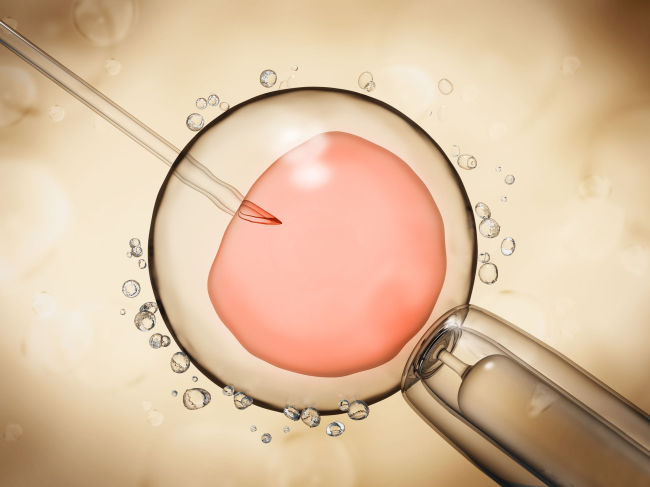More than 75 percent of Koreans who received state allowance for insemination had unexplained infertility, a strikingly high figure that may indicate many of them are not being properly tested before receiving the procedure, a study showed Wednesday.
The study, by researcher Hwang Na-mi from the Korea Institute for Health and Social Affairs, showed that the proportion of Koreans who received government allowances for infertility treatments in 2014, especially intrauterine insemination and external fertilization, is unusually high compared to the world average. IUI is the deliberate introduction of sperm into a uterus or cervix for the purpose of getting pregnant.
 |
123rf |
Quoting data from the World Health Organization and the American Society for Reproductive Medicine, the researcher claimed that only about 30 percent of all men and women who get treated for infertility worldwide get diagnosed with unexplained infertility.
Meanwhile, 52.8 percent of Koreans who received state allowances for external fertilization, and 77.2 percent of those who received the funds for IUI, had unexplained infertility, the report said.
The researcher referred to a 2005 government report which showed that only 21.4 percent of all Koreans with infertility did not know their causes, while 32 percent were caused by men, such as abnormal sperm.
In an interview with The Korea Herald, Hwang argued that it is possible that a large number of patients who underwent the procedures may have been either misdiagnosed or not properly tested at all.
According to the WHO, a couple is diagnosed with unexplained infertility when the cause of their condition remains unknown even after an infertility work-up, usually including semen analysis in the man and assessment of ovulation and fallopian tubes in the woman. Some of the most common treatment options for unexplained infertility include IUI and external fertilization.
“But until 2015, there was no clear definition of what unexplained infertility in Korea’s government guidelines for infertility patients,” she said. “It was only in October of last year that the guidelines specifically stated that those with unexplained infertility are individuals who couldn’t achieve pregnancy for three consecutive years starting from the date that they received their test results - semen analysis and assessment of ovulation and fallopian tubes -- that were normal.”
As one of its demographic policies to tackle low birthrate, the South Korean government has been providing state allowances since 2006 for Koreans who suffer from infertility. In 2010, the government started giving allowances to those who wish to receive IUI and external fertilization procedures. To be qualified, each couple has to earn 150 percent of the national average monthly income -- about 5.27 million won ($4,564) -- or less. For IUI, a couple can receive up to 500,000 won, which covers about half of the total cost, for up to three procedures. For external fertilization, up to 3 million won is given to couples, according to their household income, for up to four procedures.
From 2006-2015, a total of 100,993 newborns were born here to parents who received state support for their infertility treatments. The budget for the program increased dramatically from 31.5 billion won in 2007 to 92.5 billion won this year.
“Right now we have no data to find out whether the patients were informed of other treatment options other than IUI,” Hwang said. “We currently don’t have much data that could explain to us why the proportion of unexplained infertility patients is so high. All I can say is it is highly likely that they were not tested properly or misdiagnosed. We need a monitoring system and thorough new guidelines, and make sure those who are not unexplained infertility patients get informed about other treatment options available. We also need to do this to better manage taxpayers’ money.”
By Claire Lee (
dyc@heraldcorp.com)








![[Today’s K-pop] Blackpink’s Jennie, Lisa invited to Coachella as solo acts](http://res.heraldm.com/phpwas/restmb_idxmake.php?idx=644&simg=/content/image/2024/11/21/20241121050099_0.jpg)